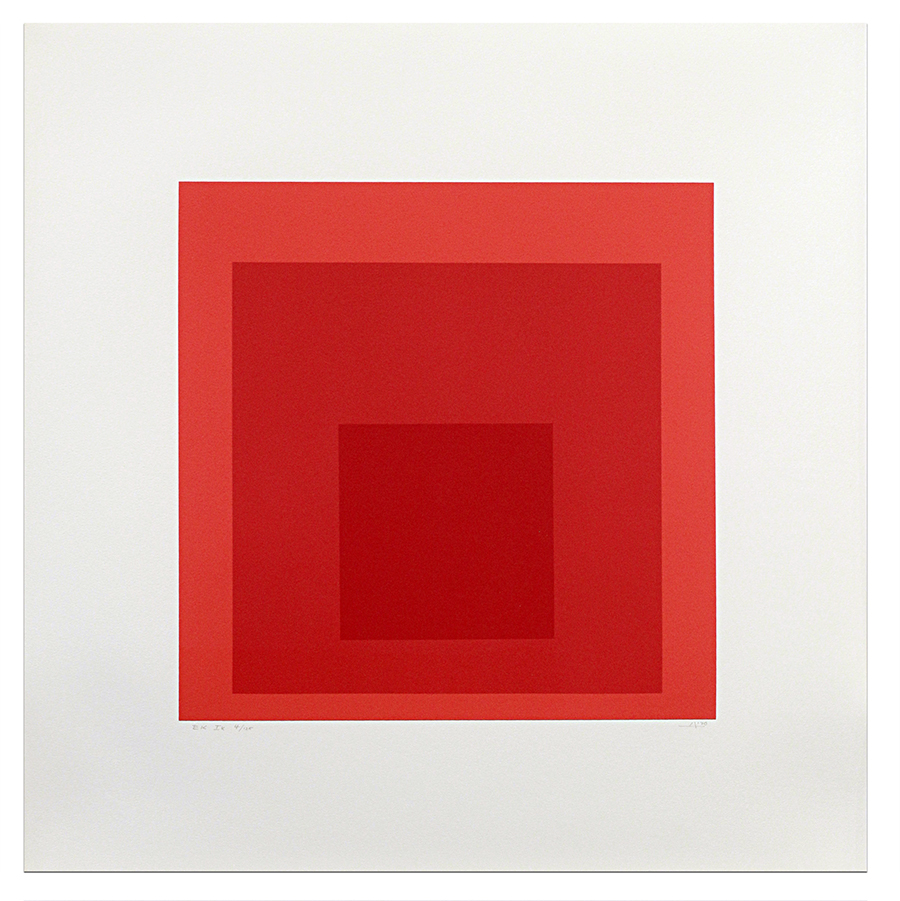Josef Albers Interaction of Colour
Josef Albers interaction of colour would go on to influence Robert Rauschenberg, Cy Twombly and Kenneth Noland.
- 1. Although Albers disavowed style category labels, he is credited with influencing the movements of Geometric Abstraction and Minimalism.
- 2. Albers was one of the first modern artists to explore the psychological effects of colour and space, and to question the nature of perception.
- 3. Albers’ self-imposed restriction to monochrome allowed him to approach the full spectrum with remarkable confidence. It was a similar approach to that of other great colourists: Georges Seurat restricted his palette to monochrome for two or three years in the 1880s and Henri Matisse focused on using black around 1918.

- 4. Albers spent many years of his life teaching, alongside his work as an artist. He famously taught at the Bauhaus, then Black Mountain College, North Carolina, and finally at Yale University. He said of the vocation, “It was my family that wanted me to be a teacher. That was safe, you see. To be a painter was terrible.”
- 5. Albers’s appreciation of complex tonal contrasts as a draughtsman, printmaker and photographer would go on to influence his own pupils including Robert Rauschenberg, Cy Twombly and Kenneth Noland. It also informed his ground-breaking and influential book Interaction of Colour.

- 6. When teaching at Yale, Albers made sure that his students would concentrate on the drawings they made by forcing them to draw on paper that cost over three dollars (a lot of money for students in those days). And, when critiquing a student’s painting, he would ask them what it was they were trying to do in it. If they responded in terms of abstract form, shape and colour he would engage them in meaningful discussion but if they responded in terms of feeling or emotion he would exclaim, “Gotten Himmel! Don’t show me your intestines!” and avoid that
- student for several days.
- 7. Albers was best known for his “Homage’s to Squares” pieces. The square was the ideal shape for the series – they are mathematically related to each other in size, perfect for superimposition, and shapes that never occur in nature, thus reaffirming their man-made quality.

- 8. In addition to painting, printmaking, and executing murals and architectural commissions, Albers published poetry, articles, and books on art. Thus, as a theoretician, as well as a teacher, he was an important influence on generations of young artists.
- 9. Albers was notoriously fiery and formidable, once quoted as saying, “If you don’t do it my way, I suggest you commit suicide.” Apparently, whenever he would storm into the dean’s office at Yale to complain, the dean would hide behind his desk. This story is unsubstantiated but widely told.
- 10. In 1971, Albers was the first living artist to have a solo exhibition at the Metropolitan Museum, New York.
Josef Albers Interaction of Colour Prints
Browse available Josef Albers prints from leading galleries and art dealers.


